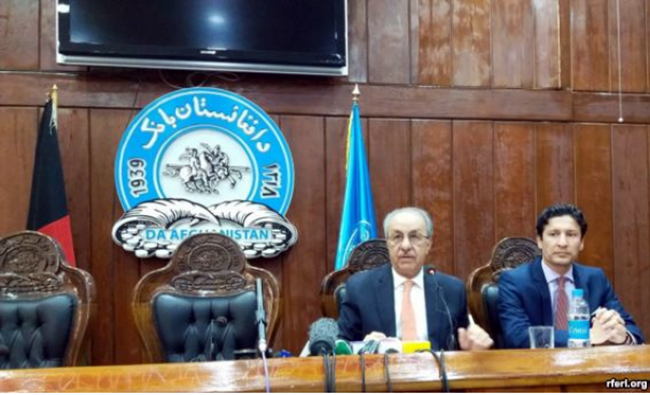The Vision and Mission of any Central Bank in the world will be more or less the same, and will hurtle towards predictable variants like price stability and economic growth. The true colour or strength of CB can be gauged, only when the bank and the country faces huge adversities. Despite all the hostile circumstances that Afghanistan had faced in the last few decades, it is indeed surprising that the central bank of the country, “Da Afghanistan Bank” still exist, and is expecting a revival of the banking system in the coming years, shows the resilience and potentials of the banking system in the country.
According to the “Da Afghanistan Bank’s” website, its objectives like price stability, promotion of National payments system and maintaining robust economic growth seems to be stereotyped versions of Central Bank. But the policy makers of the bank can be easily termed as “fire fighters” in their daily routine of juggling with the policy making on one hand and dealing with the volatile environment on the other hand. They have faced the worst-case scenarios in fixing the policies and matching with the objectives.
The Acid Test
Three decades and more, the conflict has inflicted the worst devastation and finally the interventions of US-led International military in Afghanistan have paved ways for a new government. Post-conflict, the Central Bank faced enormous challenges in keeping the country’s financial system intact.
One of the important changes that were inevitable to the financial system was to gain control over the currency issue and management. The Central Bank had already worked out a policy to issue a new national currency which will acts as a symbol in reinforcing the sovereignty of the country and consolidating all the fleeing and the cynical citizens towards national unity and brotherhood. Replacing all the bank notes within a short period of time was not only a financial challenge but also a logistical one.
Inflation remained high in 2002, followed by two consecutive years of low. Between October 07, 2002, and January 02, 2003, a new Afghani was introduced with the ISO 4217 code, which was valued at 43 Afghani to the U.S. dollar. There was a sudden depreciation of the currency during the fag end of 2003/04; thereafter the currency has been going to the north till end July 2004. The appreciation of the currency during inflation can be attributed to the confidence of the citizens in using Afghani for their daily transactions and confidence in the future of the state of the art currency. Since then the currency had superseded other currencies especially US dollar, due to the country wide acceptance, which is accredited to the promotion of this currency among the shopkeepers, traders, and donors.
The Central Bank considered Price and Exchange rate stability as one of the priorities and embarked on a clutch of policies to instill confidence in the new currency. The domestic money supply was not within the reach of the Central Bank (CB) and so as to rein in, within the context of a floating exchange regime, policies were adopted. While the conditions in Afghanistan favoured a floating exchange rate regime, the policy makers of CB foresaw price and exchange rate stability in the long run and administered exchange rate within a range, containing volatile exchange rate pressures.
The Central Bank’s legacy of banking attributed to Soviet style banking, whose sole function was to print money to cover budget deficits have become outdated. The public confidence in the banking system both commercial and development have virtually slumped to the lowest ebb. The banking system already in tatters, intermediaries, Hawala traders and unscrupulous moneylenders are playing a major role in the financial system of the country. The change, if not over the night but over the years in establishing banking law and facilitating the entry of new banks, endorsing and incubating commercial, developmental and industrial banks and establishing them and bringing back the public confidence will be crucial to the financial system in the coming years.
Currently as on May 20, 2017, one US dollar is hovering around 68 Afghan Afghani, shows that there is a great scope for renaissance of the financial sector which will prove to be too crucial for the financial and economic development of Afghanistan and a handful of neighbouring countries.
Many international investors and countries are waiting for their chance to invest in “a new golden era of Afghanistan,” and become a part of the developmental story. An anonymous investor in USA when asked by a TV reporter about the prospects of investment in different countries said, “Every Developed countries had a past and Every war ravaging countries have a future.” Let us forget and forgive and move forward for a bright and prosperous future for Afghanistan and its citizens.
Home » Opinion » Renaissance of the Central Bank in Afghanistan
Renaissance of the Central Bank in Afghanistan
| T.V.Rajesh

